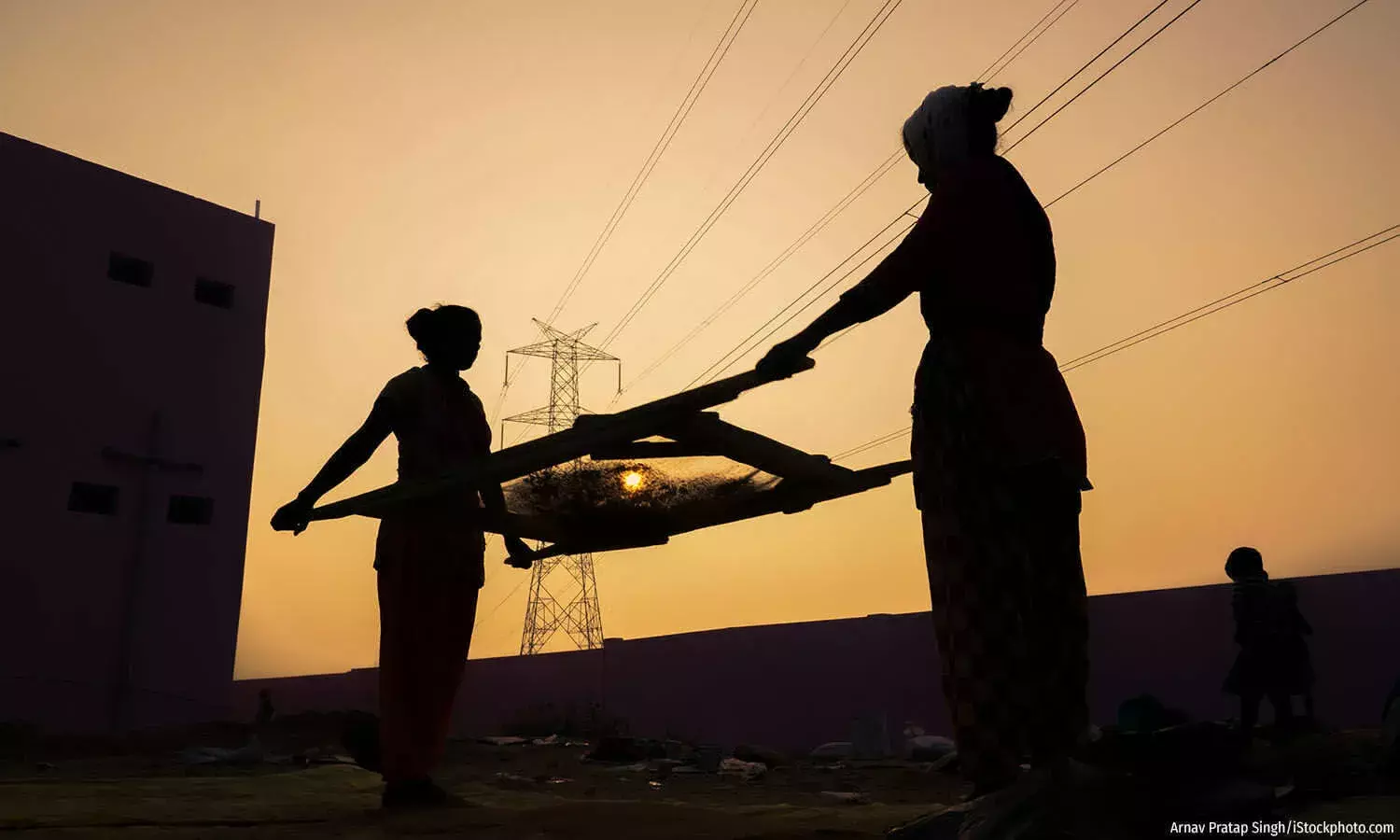#DataViz: The Gender Gap In Maharashtra’s Construction Sector
Less than 2% of women workers in Maharashtra are in the construction sector, which receives a push from the capital investments in infrastructure. Even women who do find work in the sector are paid less than men

Bengaluru: India’s construction sector is the country’s second largest employer, after agriculture. Increasing investments in infrastructure therefore have a large multiplier effect in spurring economic activity, output, and job creation. But the work is exploitative and underpaying, with fewer women finding work in the sector and an increasing gender wage gap, our analysis of data for Maharashtra shows.
At around Rs 10 lakh crore ($120.34 billion), the outlay for capital investment in the 2023-24 financial budget is about 37% higher than the revised estimates for the previous year. Maharashtra’s share in all-India nominal gross domestic product is, on average, 14% between 2014-15 and 2021-22; this is the highest amongst all states. The increased emphasis on construction in the national budget is therefore mirrored by Maharashtra’s focus on this sector as well. The number of clearances given to building construction projects almost tripled between 2021 and 2022, while those for industrial construction projects went up by 17%.
However, the share of the construction sector in Maharashtra’s Gross State Value Added (GSVA) in real terms has been consistently less than the corresponding share at the national level.
This implies that the economy in Maharashtra is less driven by the construction sector than other states, on average. Despite this, within India’s construction sector, Maharashtra’s construction sector claims a 9.1% share and this has declined nearly consistently since 2011-12, with the exception of the pandemic year 2020-21.
The share of workers in Maharashtra’s construction sector is less than the national average. For instance, only 7.63% of male workers in the state’s villages were in the construction sector, compared to 16.64% across rural India. This gap is smaller for male workers in urban areas. The share of women workers in the construction sector is very low compared to men across the country. In Maharashtra, less than 2% women workers are employed in the construction sector.
The construction sector is highly exploitative for women who are both underpaid and overworked. Our analysis of data from the Periodic Labour Force Surveys for 2020-21 and 2021-22 show a clear gender wage gap in the construction sector in both rural and urban areas of Maharashtra. This wage gap has widened by almost 4 and 8 percentage points between 2020-21 and 2021-22, in rural and urban areas, respectively.
Even as women face harsh working conditions in the construction sector, the female labour force participation (FLFP) continues to rise in Maharashtra in both rural and urban areas. In Maharashtra, the FLFP is significantly higher than the national average in rural areas while in urban areas the difference is smaller.
For investments in infrastructure and construction to have a desired multiplier effect, the workforce must expand its purchasing power. For this, it is imperative that the sector generates more and better employment for women. This assumes even greater importance in a state where labour force participation for women is increasing.
We welcome feedback. Please write to respond@indiaspend.org. We reserve the right to edit responses for language and grammar.


